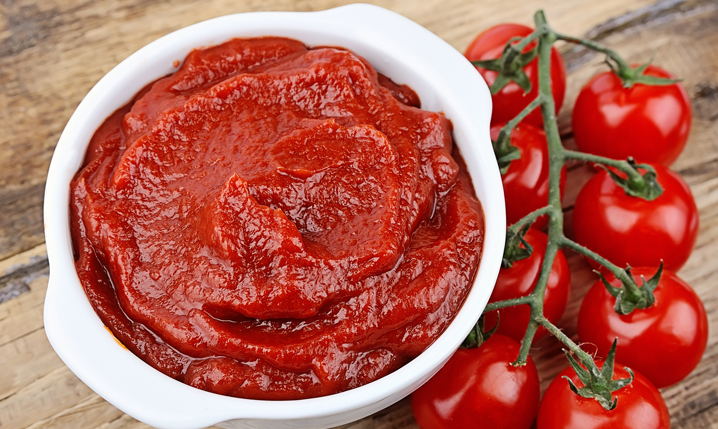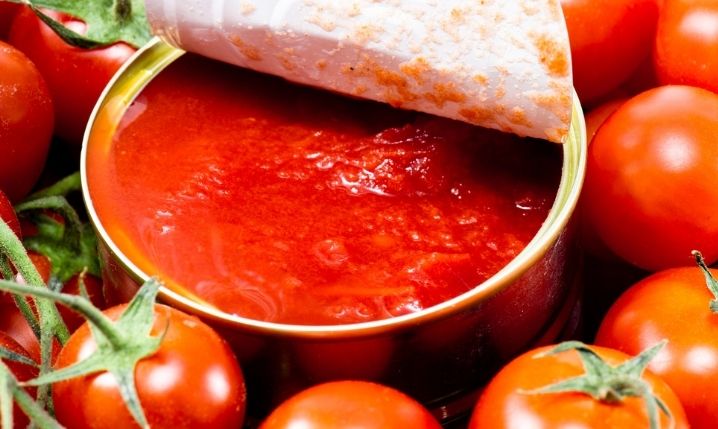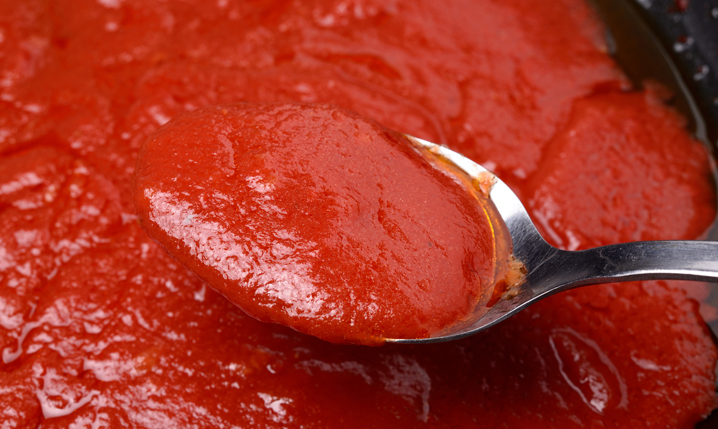Tomato Puree is a very common ingredient that can be cheaply purchased or easily prepared at home. Nonetheless, you might still find yourself looking for a tomato puree substitute from time to time. This article will look at some of the best substitutions you can make in any situation.
There are a number of options that make great substitutions for tomato puree that you can enjoy for an equally delicious outcome when following a recipe.
Read on to find out some alternatives you can use in your recipe with similar results.
Contents
What Is Tomato Puree?
Tomato puree is a thick paste-like sauce made from tomatoes that have been juiced, strained to remove the skin and seeds, then cooked and reduced. It differs from tomato sauce in its consistency, in that tomato puree is thicker (though not as thick as tomato paste) and has a more intense flavor. It is commonly used in Italian cuisine, and pasta dishes, and is added to various sauces and soups as a base flavoring and/or thickening agent.
Substitutes for Tomato Puree:
1. Tomato Sauce
As we have already mentioned, tomato sauce differs from tomato puree mostly in its consistency. Tomato sauce has a thinner, more watery texture than puree and as a result, usually has a slightly weaker flavor. This can be easily remedied by simmering gently on medium heat, stirring well, until you achieve the desired thickness.
Tomato sauce also tends to be more acidic than tomato puree and not as sweet, though once cooked, these differences shouldn’t be hugely noticeable. Often tomato sauces are also seasoned with additional herbs and spices such as basil, oregano, or even garlic. This is to add the richness of flavor that tomato sauce sometimes lacks, and is important to bear in mind as these flavorings can vastly change the overall outcome of your dish.
2. Tomato Paste

Another easily substituted ingredient to tomato puree is tomato paste. Tomato paste differs from puree in a few ways. It is cooked for far longer and consequently has a thicker, stiffer consistency and a deeper, less acidic flavor while maintaining some sweetness.
Tomato paste is very concentrated, and recipes tend to use it in small amounts. When substituting it for tomato puree, add a little water and/or olive oil and mix well to thin out the texture. Make sure only to add a little at a time so as not to make it overly watery.
For every ½ cup of tomato puree you would use, substitute ¼ cup tomato paste + ¼ water from a standard-sized cup.
If you find the mixture isn’t combining well, simmering gently on low heat whilst mixing can help bind the ingredients until you achieve a thickness equivalent to that of tomato puree. You’ll want to use slightly less paste than you would puree to account for the difference in flavor intensity.
3. Pizza Sauce
Pizza sauce is an umbrella term for all manner of different tomato-based sauces, which vary according to recipe or brand. Generally, tomato sauces are made up of chopped tomatoes, tomato sauces, and/or paste and additional seasonings such as chopped onions, garlic, bay leaf, and basil.
This kind of rich sauce is often spread onto a pizza base before adding cheese but is also used in various dipping sauces and salsas. It can also be used in many meat or pasta-based recipes.
Once again, using pizza sauce as a substitute will vary based on your individual sauce. Consider the herbs and seasonings it contains when trying to achieve your desired flavor.
As with tomato sauce, you can easily thicken your pizza sauce by simmering gently in a pan to produce a texture more similar to that of puree.
4. Fresh Tomatoes

Fresh is best, some say, so if you have the option, fresh tomatoes can make for a lovely, intensely flavored option. You will need a fairly large quantity of tomatoes. Plum or Roma tomatoes are best for creating a long-lasting and thick sauce, but you can use whatever you have on hand.
Depending on your specific preferences, you can keep or remove the seeds and skin before juicing or chopping and simply placing them in a pan as is. Bring the tomato or tomato juice to a boil, then allow to simmer.
Removing the seeds and pulp before cooking will achieve a less tart and overall smoother outcome, whereas leaving them in can add texture and give a more true tomato flavor.
Cook until you achieve the desired consistency, a thick yet spreadable paste is best if trying to emulate tomato puree, then cool and blend before adding to your dish.
5. Canned Tomatoes

Canned tomatoes are another great alternative. They are a cheap and convenient option that can be found in most stores. You may even have a tin or two sitting in the back of your cupboard.
Much like fresh tomatoes, you can blend and simmer canned tomatoes to achieve a more puree-like consistency, then when cooled, add to your recipe as you would tomato puree.
To make your own tomato puree with canned tomatoes:
- Transfer canned tomatoes to a cooking pot
- Add 75ml water for each can of tomatoes and stir well.
- Cook for 15 minutes on a gentle-medium heat.
- Allow tomatoes to cool.
- Run through a blender.
- Decant your homemade tomato puree.
6. Ketchup
While ketchup’s primary ingredient is tomatoes, it doesn’t always work as the best substitute for recipes requiring tomato-based sauces. Ketchup is a table condiment designed to be added to food after it has been cooked to add flavor, rather than a sauce which is often added as part of the cooking process.
Ketchup is made up of various ingredients besides tomatoes, including sugar, vinegar, salt, and varied seasonings and spices. This combination is what makes up ketchup’s unique sweet and tangy flavor. However, when using in place of puree, you may find the sugar and vinegar a little strong compared with puree, which is essentially just tomato. Tomato ketchup also has a thinner consistency than puree, closer to a thick sauce.
Of all the possible substitutes, ketchup is probably the least suitable and will achieve a flavor and texture least true to tomato puree. However, if you like the taste, it can be used in a pinch.
7. Ragu
Ragu is a meat-based sauce from Italy that is best served with pasta dishes. It often uses all kinds of ground or minced meat. The liquid base uses broth, water, wine, stock, and tomato.
It is a rich and delicious sauce that can be used in place of tomato puree for several pasta recipes such as bolognese and similar.
Conclusion
The above options will work as a tomato puree substitute in almost any situation. There’s delicious tomato sauce, versatile tomato paste, or even something as easily available as a shop-bought ragu. No matter what you pick one of these alternatives will work excellently for any dish.
